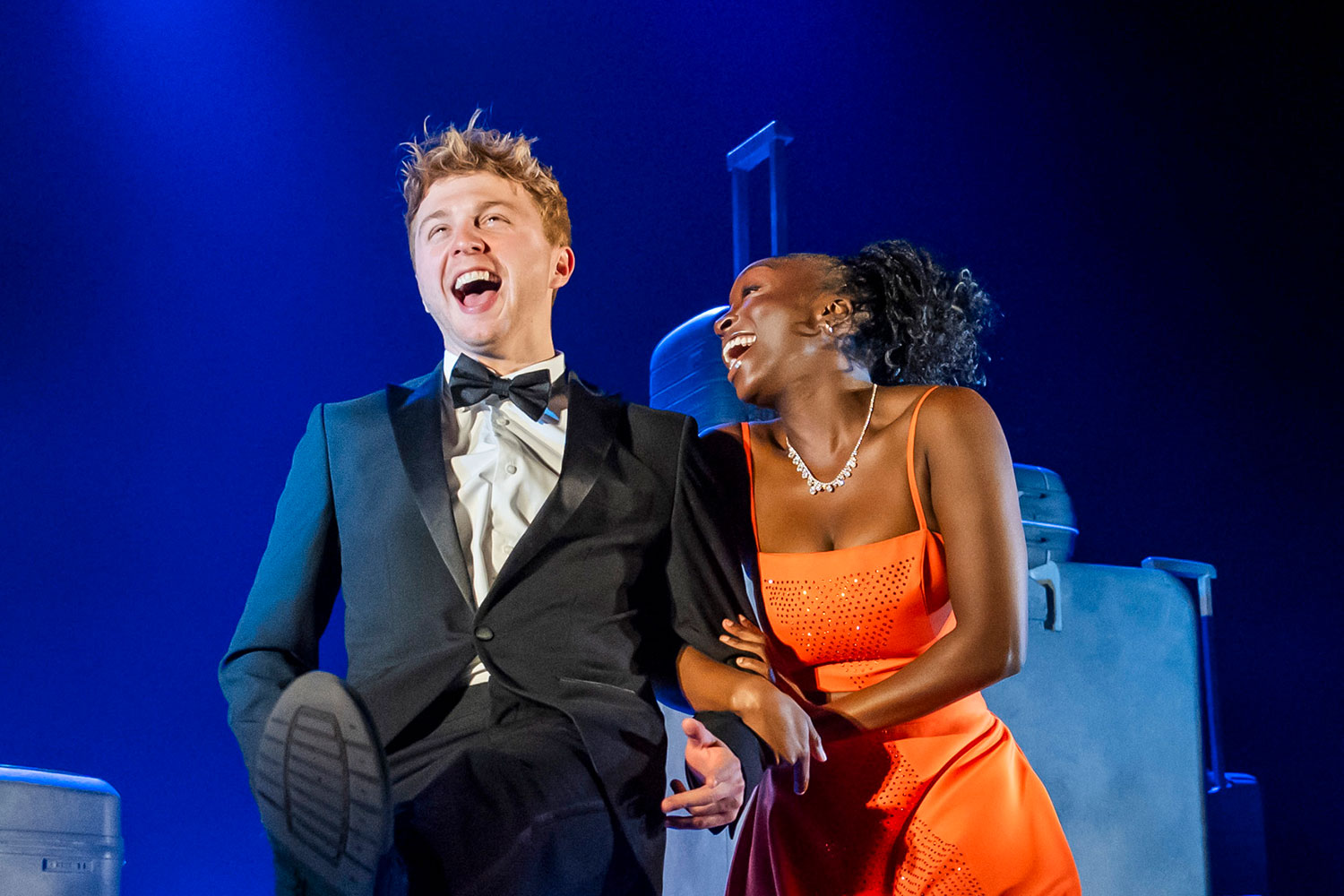Review: Mary Stuart (Almeida)
The starting point for Robert Icke‘s daring version of Mary Stuart is a fascinating proposition: only chance decided the fates of Elizabeth I of England and Mary Queen of Scots. The bastard child of Henry VIII whose childhood was spent in uncertainty ended up ruling England, while the child born to govern was executed at her cousin’s hand.
To show the randomness of fate, the production opens with a solemn procession where actresses Lia Williams and Juliet Stevenson, identically dressed in velvet trouser suits and white silk shirts, approach Hildegard Bechtler’s polished wooden circle of a stage where the rest of the grey-suited cast await. With great ceremony, Williams calls heads, and a coin is spun, its twisting recorded on screens above our heads. Heads it is, at the performance I attended and in that split second Williams becomes Elizabeth, all regal poise, while Stevenson kicks off her shoes and her jacket and scribbles the signature Mary R.
Thus are the stories of nations and individuals decided, Icke is saying. A moment turns one into a monarch and one into an asylum seeker, a refugee, seeking to appeal to international law to save her own skin, while plotting for freedom with anyone passing the castle where she is imprisoned. It’s a striking view and in Icke’s own translation of Schiller’s original, beautifully carried through. The words are tough and sinewy, underlining contemporary references while keeping a sense of poetry.
In the machinations of the courtiers the approach pays dividends. Vincent Franklin’s Burleigh is both bureaucratic and terrifying – I have never felt so clearly how all his actions are designed not only to protect the Queen from harm but to protect Protestant England from the Catholic onslaught. Rudi Dharmalingam‘s Mortimer is a pro-Mary, religious zealot, convinced of the right of his cause, in love with his own courage; John Light’s cold-eyed, calculating Leicester is the ultimate player, who uses his sexual attraction to attract and manipulate both Queens.
It is gripping stuff. But the danger of making Mary and Elizabeth two sides of the same coin is fairly obvious: they become too alike. Part of Schiller’s fascination with the story was the difference at its heart; he explicitly sets the passion and warmth of Mary against Elizabeth’s cool judgement and wariness. Over and over again the production flattens that distinction, turning them quite explicitly into reflections of each other; the staging actually makes them mirror each other’s movements.
Both performances are nuanced but cool and slightly mannered. In Williams’ hands, Elizabeth is vulnerable and frightened, with flashes of fierce authority; Stevenson’s Mary is excitable, her humanity to those around her in sharp contrast to Elizabeth’s coolness, but her rage just as intense. On days when there is a matinee and an evening performance (and only then) it is possible to guarantee you will see the actresses swap roles if you are prepared to sit through the play twice; I couldn’t but I’d be interested to know if there was much difference to the overall impact. This way round, I felt the portrayals were oddly similar, as if they have influenced each other by osmosis. Perhaps that too is the point.
In any case, each individual performance (including a fantastic late turn from young David Jonsson as a man in an impossible position) serves the overall authority and impressiveness of the production. It has a grave thoughtfulness, a choreographed grandeur that makes every gesture count – the way Elizabeth clicks her fingers when she wants the court to move, the moment Leicester lifts her in the air in contrived passion, how Mary fights like a captive animal in their one (entirely imagined on Schiller’s part) encounter. Everything is surrounded by Laura Marling‘s commissioned score (of which I could have done with slightly less) and bathed in Jackie Shemesh’s precisely calibrated light.
There’s a scene towards the end, where one runs free and the other is trapped, that is so magical, I don’t want to give it away. I know I shall remember it always. I shall think about the production too and the way Icke makes it speak so powerfully to our times, while never losing track of those in which it belongs.
Mary Stuart runs at the Almeida until 21 January 2017.











